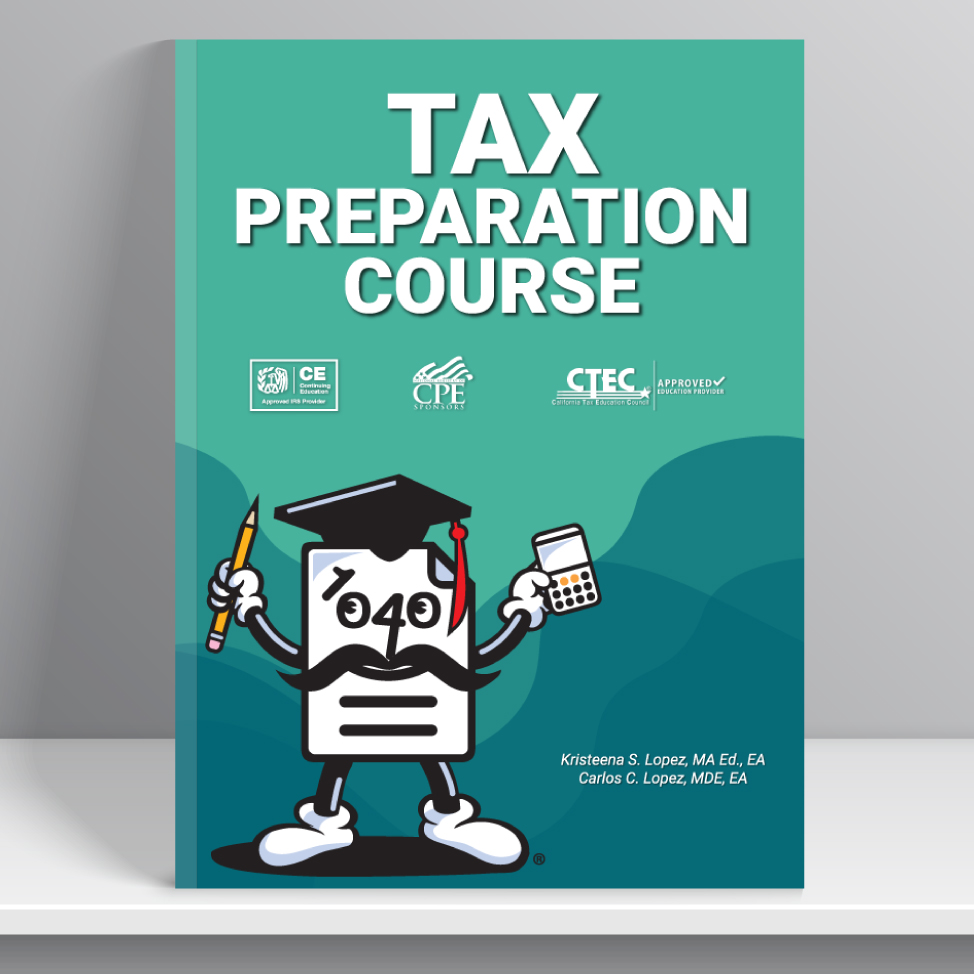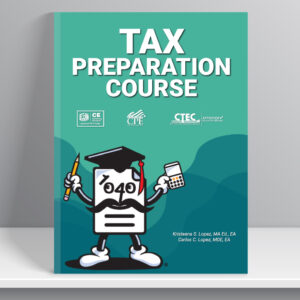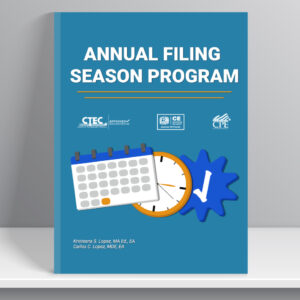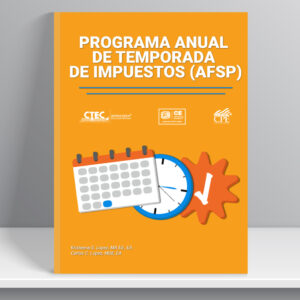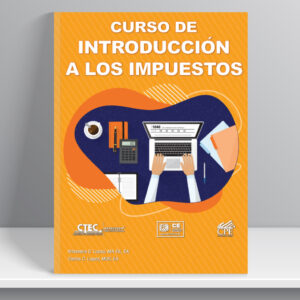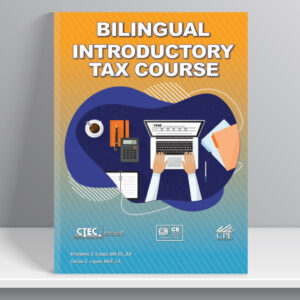This chapter will explain how to determine who qualifies as a tax return preparer, what representation rights a preparer has, how that individual is bound by the Circular 230 guidelines, and what it means for a tax preparer to behave ethically and responsibly.
Chapter 2: Best Practices to Counteract Cybercrime
Protecting yourself and your clients is one of the biggest challenges that tax return preparers face today. Criminals have learned that tax return preparers have a lot of information about their customers, including their Social Security numbers, information about their families, and employment history. Criminals want to steal this information and weaponize it to steal money from banks, the IRS, or conduct other crimes.
Chapter 3: Compiling Taxpayers Information
This chapter explains the importance of interviewing the taxpayer. Each segment of the chapter will cover a section of Form 1040 with sample interview questions that are needed for the section discussed. The tax professional needs to understand the importance of knowledgeable questions to determine if the taxpayer is eligible to claim certain credits. Interview questions asked should be documented as well as the answers the taxpayer provided. Knowing basic tax law is essential.
Preparing tax returns is an art; knowing which questions to ask will help determine the best tax situation for the individual. Just imputing information into software does not prepare an accurate tax return. The saying is true: “garbage in, garbage out”. Entering incorrect information so that the taxpayer receives a higher refund is not the best situation for you or the client. This chapter provides you with a brief overview of current year forms and sample questions to determine the best tax position for the taxpayer. Asking the taxpayer, the right questions from the beginning provides the tax preparer accurate answers needed to complete the tax return.
Chapter 4: Filing Status, Dependents and Deductions
This chapter will present an overview of the Tax Cuts and Jobs Act standard deduction and what circumstances permit taxpayers to claim a higher standard deduction. You will also learn what an exemption is, what exemptions each of the filing statuses can claim, and how to identify a qualifying dependent.
Chapter 5: Income
The IRS has the authority to tax all income from whatever source it is derived. This includes compensation for services, gains from dispositions of property, interest and dividends, rent and royalties, pensions and annuities, gambling winnings, and even illegal activities. All such income a person receives is collectively referred to as “worldwide income.” However, not all money or property is taxable or subject to tax. This chapter will cover the different types of taxable and nontaxable income and show you where and how to report such wages on a professionally prepared tax return. A tax professional must recognize the different kinds of taxable income, tax-exempt income, and other income included in Schedule 1, line 21, and must know how to figure out the taxable percentage on Social Security benefits.
Chapter 6: Interest and Dividends
Any interest or dividends can be taxable income if they are credited to the taxpayer’s account and can be withdrawn. This chapter will cover the exceptions to this rule and show which interest and dividends are not taxable income and which expenses can be deducted on the taxpayer’s Schedule A if the taxpayer itemizes.
Chapter 7: Tax Credits and Payments
A nonrefundable tax credit reduces the amount of tax liability that may have to be paid. Unlike a deduction, which reduces the amount of income that is subject to taxation, a credit directly reduces the tax itself. There are two types of credits: nonrefundable, which cannot reduce tax liability below zero, and refundable, which can reduce tax liability below zero, resulting in the need for a refund.
Chapter 8: Adjustments to Income
In this chapter, students will learn how various expenses are used to “adjust” or lower the taxpayer’s income to arrive at his or her adjusted gross income (AGI). They will also learn how the Tax Cuts and Jobs Act (TCJA) has impacted adjustments at the federal level and how to handle any previous-year returns that preceded those TCJA-mandated changes.
Chapter 9: Itemized Deductions
When computing taxable income, personal expenses cannot be claimed as itemized deductions; however, tax rules do allow for some deductions that are essential for daily living. These specific expenses are deductible as itemized deductions. A standard deduction is a set amount that the taxpayer can claim based on his or her filing status. Itemized deductions are shown on the tax return using Schedule A, Itemized Deductions. The taxpayer must decide whether to itemize deductions or use the standard deduction and should choose whichever option is best for their tax situation.
Chapter 10: Other Taxes and Taxpayer Penalties
This chapter provides an overview of miscellaneous taxes from the Form 1040 and reported on Schedule 2 that a taxpayer might be assessed. This includes excess Social Security tax, additional taxes on IRAs, the Alternative Minimum Tax, and household employment taxes.
Chapter 11: Capital Gains and Losses
Almost everything a taxpayer owns and uses for personal or investment purposes is a capital asset. When a capital asset is sold, the difference between the basis in the asset and the amount the item is sold for is either a capital gain or a capital loss. A capital gain is the profit that results from selling an investment (stocks, bonds, or real estate) for a higher price than it was purchased. Capital gains may refer to investment income that arises in relation to real assets (such as property), financial assets (such as shares of stocks or bonds), and intangible assets (such as goodwill). A capital loss arises if the proceeds from the sale of a capital asset are less than the purchase price. The taxpayer can deduct up to a $3,000 loss ($1,500 if filing MFS). The capital loss that exceeds the limit amount may be taken in future years.
Chapter 12: Business Income
This chapter presents an overview of Schedule C, which includes income and expenses. The income or loss is reported on Form 1040, Schedule 1, line 3. Sole proprietorship is not a legal entity; it refers to a person who owns a business and is personally responsible for its debts. Sole proprietorship is a popular business structure due to the simplicity, ease of setup, and nominal startup costs. Ultimately, a sole proprietor would register the business name with the state and city, obtain local business licenses, and then open for business. A drawback of being a sole proprietor is that the owner is 100% personally liable for the business’s income and/or debt.
Chapter 13: Depreciation
Depreciation is an annual deduction that allows taxpayers to recover the cost or other basis of their business or investment property over a certain number of years. Depreciation is an allowance for the wear and tear, decline, or uselessness of a property and begins when a taxpayer places property in service for use in a trade or business. The property ceases to be depreciable when the taxpayer has fully recovered the property’s cost or other basis or when the property has been retired from service, whichever comes first. Depreciation is reported on Form 4562.
Chapter 14: Electronic Filing
Electronic filing (also referred to as E-File and E-filing) is the process of submitting tax returns over the internet via properly-certified tax software. The E-File system has made tax preparation significantly easier, and the IRS notifies software users within 24-48 hours if they accepted or rejected the tax return. E-filing is not available year-round but rather begins sometime in January and ends sometime in October; the IRS determines when exactly e-filing begins and ends each year, and states follow whatever dates the IRS sets. An electronic return originator (ERO) is the individual who originates the electronic submission of the tax return. To file a return electronically, the individual needs to be an Authorized IRS e-File Provider.
Chapter 15: Extensions and Amendments
If taxpayers are unable to file their federal individual tax returns by the due date, he or she may be able to qualify for an automatic six-month extension of time to file. The taxpayer can either electronically file or mail Form 4868 to the IRS to file for the extension. If the taxpayer has filed a return and realizes that a mistake was made, he or she would file an amended return by using Form 1040-X.

